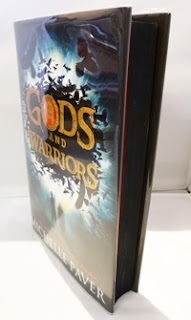So. Yes. To answer the most important question; there is indeed such a thing as a pink pigeon - and you'll have to take a trip to Mauritius if you'd like to see one... oh, okay - or Jersey zoo (wildlife park).
Golden Bats and Pink Pigeons is Gerald Durrell's account of his first sustained overseas conservation efforts for his animal sanctuary in Jersey; his expeditions to Mauritius to help prevent the extinction of several threatened species. His companions for the trips were his assistant John and secretary Ann and the secondary aim of the trip was to discuss a new captive breeding programme with the Mauritian Government whereby the Jersey Wildlife Preservation Trust offered a scholarship scheme for students to train with them over in Jersey and then return to their native countries to set up their own captive breeding programmes; thus ensuring the survival of a number of endangered species. Reading Golden Bats has reminded me what a ground-breaking conservationist Gerald Durrell really was. I had no idea quite how much work and dedication went into finding and capturing these birds and animals, so that they could learn from them and breed from them in captivity. Just read Durrell's descriptions of the team's visits to the extremely inhospitable Round Island for a true taste of commitment to one's work. Steep rocky screes, scorching unremitting sun, a boat landing to make even an intrepid explorer nervous; not to mention his side-splitting account of camping in the middle of a colony of Shearwaters.
Durrell writes superbly; succintly and with enough wit and humour to make conservation accessible and interesting to everyone. His descriptions make the habitat and the animals leap off the page, lifelike. I love this description of his first encounter with a Jak fruit, an essential weapon in the arsenal for bat-catching:
"What was revealed when the swaddling clothes were stripped away, was an obscene green fruit covered with knobs and looking rather like the corpse of a Martian baby. To help the illusion, there arose from it a thick, sweetish, very pungent smell, vaguely reminiscent of a putrefying body."Although Durrell described himself as a naturalist first, writer second, his writing is accessible, fun and entertaining and I'm going to enjoy exploring some of his other books. There are loads to choose from. Here's my shortlist of titles that take my fancy: The Drunken Forest, Menagerie Manor, The Aye-Aye and I, Fillets of Plaice, Catch me a Colobus, A Zoo in my Luggage... those should get me started. Mauritius may be a little beyond my means, but I am inspired to take another little trip to Jersey and this time visit the wildlife park. Camping there looks fun (and luxurious) too.









